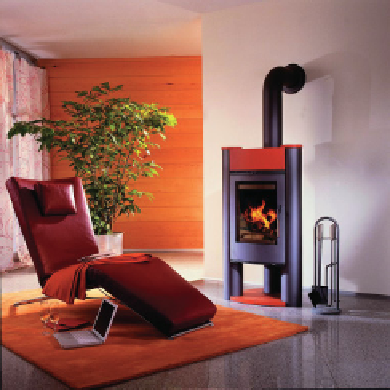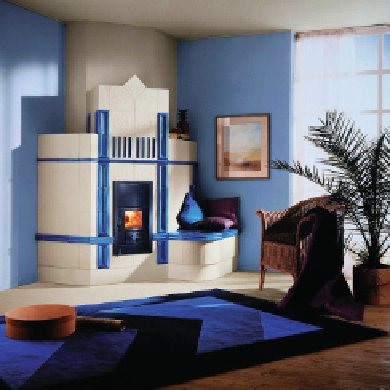Environmental Engineering Reference
In-Depth Information
12.2.2 Fireplaces and Closed Woodburning Stoves
The classic biomass heating system is the fi replace. For centuries open fi replaces
have been used to heat individual rooms. Yet this is a relatively ineffi cient use of
fi rewood. Open fi replaces usually only reach 20 to 30% effi ciency. This means that
70 to 80% of the fi rewood's energy escapes unused through a chimney. As romantic
as old castles and palaces may seem, the use of open fi res to achieve consistently
pleasant room temperatures in draughty castle halls was an almost hopeless task.
With 70 to 85% effi ciency, enclosed fi replaces and closed woodburning stoves are
considerably more effective than open fi replaces (Figure 12.7). A glass panel in
front of the stove can be opened to resupply it with wood and then closed after it
has been lit. In principle, fi replaces can also be used to heat up domestic water.
Fireplaces and closed woodburning stoves are normally only used as supplementary
heating systems because of the work involved in cleaning and lighting them, and
replacing the fi rewood.
One of the main problems with fi replaces is that they need a relatively large amount
of air. In addition to the air needed to enable a fi re to burn well, large amounts of
unused air escape through the chimney. A fresh air supply from outdoors to burn a
fi re is essential for well-insulated and airtight houses.
Figure 12.7
Enclosed fi replace and closed woodburning stove.
Source: BBT Thermotechnik GmbH.
12.2.3 Firewood Boilers
The fi rewood boiler (Figure 12.8) is an option for those who want to heat with
reasonably priced fi rewood and without the bother of a fi replace or stove. As these
boilers are usually installed in a cellar, they do not have aesthetic merits of a
fi replace. They have large containers for wood supplies that need to be stocked
manually, and they can burn for several hours on a single load of wood.


